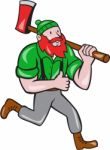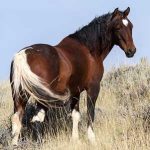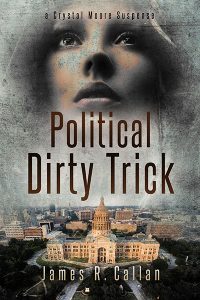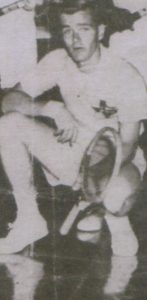The Vanishing Horse
Many years ago, I wrote a blog about a special Christmas gift I got for the kids. I’ve been asked to repeat it this year. Since this is a difficult year, and a very difficult Christmas season, I am repeating the story. I hope this brings a smile to your face. Most of all this year, we need to remember the good things of the past and not let the problems of today blind us to the good things we have experienced.
My second Christmas in Connecticut promised to be special. I had bought the house on Great Hill Road just a hundred feet from a quiet lake with maple, birch and spruce trees growing almost to the water line. The kids had ten free days to enjoy The Dolphin, a small row boat which they had helped refinish and paint, and which they could easily manage. If it turned cold enough and the lake froze, the ice skates would come out. And, though they didn’t know it, they were going to have a spectacular gift.
Earlier in the month, after considerable research, I traveled into central Connecticut to look at horses. The selection process proved to be  complicated. A horse named Trouble pawed the ground, snorted, and would have bitten me had I not been considerably quicker than I am now. A second horse, Lightning, slept through the interview, barely managing to put two feet ahead of the other two. He failed to make the cut. The next candidate, Cara, passed with flying colors—until price entered the picture. Grace, a lovely sorrel, had two—no, make that four—left feet.
complicated. A horse named Trouble pawed the ground, snorted, and would have bitten me had I not been considerably quicker than I am now. A second horse, Lightning, slept through the interview, barely managing to put two feet ahead of the other two. He failed to make the cut. The next candidate, Cara, passed with flying colors—until price entered the picture. Grace, a lovely sorrel, had two—no, make that four—left feet.
Eventually, I found a beautiful, if not young, roan with a gentle, if occasionally obstinate, disposition named Cheyenne. After a brief ride, I purchased Cheyenne.
Marvin Whittle, who was employed at the research lab where I worked, owned a stable right in town, not far from our house on Great Hill. We came to an agreement and I made arrangements to have Cheyenne transported from central Connecticut to the Whittle Farm.
Never in my life had I bought a saddle, but now I shopped and evaluated. What did I know about such things? There were western saddles and eastern saddles, but no southern saddles. Curious. I discovered that Western meant big and comfortable while eastern meant small and uncomfortable. Just like the states. I opted for a Texas style, not so big that the girls could not handle it, and with the proper leather smell.
Then came a bridle, blankets, and a source for hay. Wouldn’t a dog have been simpler?
A week before Christmas, I had the present—Cheyenne and all the necessary items to outfit him, house him, and even feed him for the first month. Early on Christmas eve, I moved Cheyenne from the Whittle Farm to a neighbor’s near-by home. Things moved along as smooth as a well used halter.
 The children were nestled all snug in their beds, with visions of sugar plums dancing in their heads. I slipped out, sneaked down a quarter mile to the neighbor’s house, and on tip-toes, lead Cheyenne to our place, and tied him securely to a bush outside the front of the house.
The children were nestled all snug in their beds, with visions of sugar plums dancing in their heads. I slipped out, sneaked down a quarter mile to the neighbor’s house, and on tip-toes, lead Cheyenne to our place, and tied him securely to a bush outside the front of the house.
The land bordering on this part of Great Hill sloped down to the beautiful lake. Most houses, and ours was no exception, faced the lake. The main floor of the house, while at ground level on the side nearest the road, projected out eight feet above the ground on the lake side. Positioning Cheyenne in front of the house kept him well below the sight lines from bedrooms and the living room where the tree twinkled and presents waited impatiently to be unwrapped.
As was tradition, the kids arose before the sun, leaping from deep sleep to hyper-active as quick as a sneeze, clamoring to see what Santa had deposited in our living room. (They never expected to find only a lump of coal. In fairness, I guess they never deserved such.)
Christmas and presents, even if meager, generate excitement, screams of joy, and only occasionally envy. This Christmas was little different, if somewhat subdued. In truth, Santa had not been as generous as had been his habit in years past. Even those holidays when I was in graduate school looked somewhat fatter than this year. So, while it is not fair to say they were disappointed, well—it didn’t take long to open Santa’s leavings.
After a slight delay, wanting them to enjoy the non-horse items, I invited them to follow me outside. This produced a few groans, and actually made the Christmas offerings look a lot better and difficult to leave. But since I knew how excited they would be over the horse, I persisted. We exited the back and with a sly grin on my face I led them around to the front of the house.
Triumphantly, we turned the corner to find—nothing. No Christmas horse. No Cheyenne. No saddle. No blanket. No bridle.
To say I was stunned is to say the Sahara is a sand pile. Horse thieves in Connecticut? The kids, not knowing what to expect, just looked at me … expectantly. What was the big surprise? I knew what my surprise was. No Cheyenne.
Pulling myself together, not wanting to look too lost in front of the kids, I surveyed the area. Not only was the horse missing, the large bush he had been tied to was gone as well. Why would rustlers take my bush?
I mumbled some nonsense and sent the kids back inside to play with their meager cache. Slowly, I became a cunning tracker. Before long, I was picking out signs, some of which I will not describe, with the skill of an Indian brave trainee. After only a quarter mile, I heard the sound I had expected earlier: excited children. Rounding a clump of cedars, there was Cheyenne—as well as two young kids thrilled with the newfound present Santa had left for them.
I eased up, saying some soothing, cheerful things to the young boy and girl as I endeavored to take the reins. They clutched the leather tighter, accusing me of trying to steal their Christmas present. I bent low, hoping not to look like a towering monster, and spoke softly with an angelic smile on my face. Logic had always been a strong point for me, so I explained to them, in child-like terms, what had happened.
I remained the evil Grinch.
With some subterfuge, I got one end of the reins, and shielded it from the now screaming girl. But my gain amounted to little, as the boy instantly clamped his tiny hands around the stirrup. The boy’s cries now echoed hers and people on the other side of the lake came out on porches to see what malfeasance had come to Rainbow Lake.
Trouble was closer at hand. An angry mother burst out of the nearby house, ready to kill the miscreant trying to kidnap, or otherwise harm, her children. She was followed by a big, burly man, surely seven feet tall, who’s eyes did not exhibit the Christmas spirit.
 The woman ran to her children, shielding them from scoundrel me, questioning them as to what I had done. The man, his Paul Bunyan legs requiring few steps to traverse the distance, grilled me. I quickly recognized he was a seven foot interrogator for the CIA.
The woman ran to her children, shielding them from scoundrel me, questioning them as to what I had done. The man, his Paul Bunyan legs requiring few steps to traverse the distance, grilled me. I quickly recognized he was a seven foot interrogator for the CIA.
At long last, logic arrived on the scene, tardy as usual in such situations. The children finally managed to sob that I was taking their horse. Santa had left their present outside, since it was too big to go down the chimney. They had found it, and now, Scrooge was trying to steal it.
With the aid of the one rein still attached to the bush, I described how Cheyenne uprooted his hitching post and wandered down to their yard.
The mother’s translation did not cheer the children. But they were somewhat mollified when I promised to bring Cheyenne down and let them ride him later in the day.
 Needless to say, when I once more enticed my children outside to meet Cheyenne, Christmas became a lot brighter. He was an instant star, and continued to be their favorite even when, a year later, a younger, more beautiful buckskin named Major joined Cheyenne in the family circus.
Needless to say, when I once more enticed my children outside to meet Cheyenne, Christmas became a lot brighter. He was an instant star, and continued to be their favorite even when, a year later, a younger, more beautiful buckskin named Major joined Cheyenne in the family circus.
James R. Callan


 and tragic-comic bubble and squeak. —William Harrison Ainsworth, New Monthly Magazine, review of Moby Dick by Herman Melville (1851)
and tragic-comic bubble and squeak. —William Harrison Ainsworth, New Monthly Magazine, review of Moby Dick by Herman Melville (1851)


 the glamorous life of a writer. It’s a fun read and maybe we can see ourselves in the title role. Jennifer has published six contemporary novels, maintains a devotional blog, and works on several fronts to help women realize their true worth. But now, here is that glamorous life.
the glamorous life of a writer. It’s a fun read and maybe we can see ourselves in the title role. Jennifer has published six contemporary novels, maintains a devotional blog, and works on several fronts to help women realize their true worth. But now, here is that glamorous life. Jennifer ‘ latest book is Restoring Her Faith. Here’s a brief blurb on it.
Jennifer ‘ latest book is Restoring Her Faith. Here’s a brief blurb on it. My mother and I were doing some Christmas shopping one day before Christmas (of course). Here, I do not mean “one day” as the day before Christmas, but “one day” as in “a single day.” We had bought an item at the Harris store in Oak Cliff. While we waited for the sale to be processed, I let slip a complaint about the wart on my finger. Perhaps I had served a double-fault the day before, or some other wart-induced calamity. But I did complain about my wart.
My mother and I were doing some Christmas shopping one day before Christmas (of course). Here, I do not mean “one day” as the day before Christmas, but “one day” as in “a single day.” We had bought an item at the Harris store in Oak Cliff. While we waited for the sale to be processed, I let slip a complaint about the wart on my finger. Perhaps I had served a double-fault the day before, or some other wart-induced calamity. But I did complain about my wart.
 heroine of A Ton of Gold and A Silver Medallion. Hello, Eula. How are you today?
heroine of A Ton of Gold and A Silver Medallion. Hello, Eula. How are you today? JIM: This past year, she went down to Mexico to rescue some young girls. What did you think about that? I mean, she doesn’t seem like the adventure-seeking type to me.
JIM: This past year, she went down to Mexico to rescue some young girls. What did you think about that? I mean, she doesn’t seem like the adventure-seeking type to me. I never had a problem with any of this class.
I never had a problem with any of this class. “This might be too tiring for the pig,” she continued. “I must insist you allow a rest period every five minutes.” I suggested every fifteen minutes and we ultimately compromised on ten minutes. I wondered how effective this would be. Would the pig understand a rest period?
“This might be too tiring for the pig,” she continued. “I must insist you allow a rest period every five minutes.” I suggested every fifteen minutes and we ultimately compromised on ten minutes. I wondered how effective this would be. Would the pig understand a rest period?
 Though close to eighty students had signed up, there were probably only fifty on the starting line. Possibly some had second thoughts after seeing this ferocious looking bovine. But there were probably another two hundred and fifty spectators. On the count of three, the rope was dropped and the door to the cage thrown opened.
Though close to eighty students had signed up, there were probably only fifty on the starting line. Possibly some had second thoughts after seeing this ferocious looking bovine. But there were probably another two hundred and fifty spectators. On the count of three, the rope was dropped and the door to the cage thrown opened.